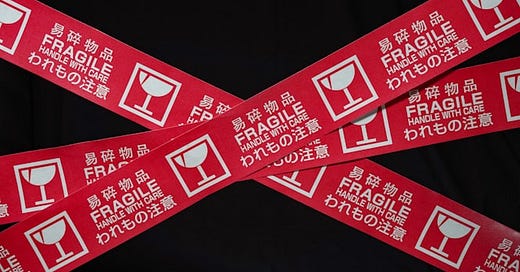Those familiar with the term “antifragile”, might wonder how antifragility and family add up. Or in other words, how can a family be antifragile? For those not familiar with the term, we will quickly explain:
We all know what fragility is, something that breaks easily when under stress. So that is why the word “fragile” is printed onto boxes with delicate contents. The next word in this context would be “resilient”. In other words, something that can withstand stress, or at least return back to its original state after pressure is applied. Like a tennis ball. You can hit it really hard, it will deform from the impact, and then return to its original form afterwards. How would you define the next level up from this? Nassim Taleb had a go at this in his book “Antifragile: Things that gain from disorder”. The name of the book already gives away the essence of the words meaning. While resilient systems can withstand stress, antifragile systems improve from stress. Our bodies are antifragile systems: when you go to the gym you put yourself under stress, and your muscles grow. That per definition is antifragility.
Most systems we encounter that are antifragile are biological systems. Most if not all systems that are created by humanity end up being fragile or resilient at best. Now, does an antifragile system never break? Of course, it can and will. There is a certain threshold of stress that will lead to improvement. Imagine yourself in the gym and trying to squat 180kg, while your PB is 120kg. Let us say you can get it out of the rack in the first place. I wager, that you will not be seeing a gym from the inside for a long time afterwards. That weight is simply too much for you and will literally break you.
Now that we have gotten the basics of antifragility down, we can look at a family. A family is a system. A family is our society’s smallest sub-system. Families are the motor of humanity. Be it socially or in business. Most of the world’s GDP is made from family businesses (businesses owned by families). About half the world’s workforce is employed at family businesses. Our family is where we are at home. In most cases, we can trust our family members more than anyone else (dysfunctional families being the exception here). A family is a collection of related humans, and humans are essentially antifragile. Will this automatically make a family antifragile? Sadly, it will not. So what makes some families be antifragile, while others are fragile? And everything in between the two extremes.

In this newsletter series, we are going to explore the ideal concoction for making a family antifragile. Each family has a different composition of people. In other words, each family’s DNA is different. Not only that, but each family has different behaviours, a different number of people, different cultures, etc. So, is there really a generalisation of what ingredients are needed? I believe there is. Each family’s specific dynamics will come to be shown once the family is put under pressure. Like in a block of glass, where you see through, but once pressure is applied you will see its distinguishable structure.
A family will experience different stressors over their time. If they are prepared well, they will come out of hardship stronger than before. If they are not prepared well, the hardship might break the family. So what is your family’s baseline? How much stress can your family handle? How do family members behave under stress? How well do they work together? “Never let a good crisis, go to waste.” - Winston Churchill embodies the essence of antifragility. We need to learn from crises and see them as an opportunity for improvement.
Look at families that have thrived over many generations, some over many many hundreds of years. What will you see? All of them have faced adversity regularly. The longer a period of no adversity, the more likely a family’s complete downfall will become. Why is this? Antifragile systems weaken over time, if there is no stress. Look again at your body, while going to the gym will make you strong, stopping to do any sport will make you weak. The same applies to families or any other biological or social system. So the key ingredient for your family is, that you make sure everyone experiences stress. That the family needs to work through problems together. That the family is exposed to unpredictability and randomness. By depriving the family of these, you take away the family’s ability to become antifragile. Many security and risk experts are trying to do exactly this. Wrap your family in bubble wrap and watch it degenerate. The smallest stressor (in absolute terms) will become a huge problem (in relative terms).
Another point that is raised by Nassim Taleb about antifragile systems is, that every system needs to have fragile parts. This might sound totally contrary, but your family will have members that are fragile. This could be physical, this could be mental, due to illness or other aspects. Don’t fret, this will not mean the downfall of the family. It is a key ingredient for the family to improve as a whole system. Weaker family members can serve as a warning system as they will feel the issues earlier. So the lower baseline for stress from individuals serves an important role in gradually showing that an issue is approaching. Also, the diversity of the family can be an undervalued strength. While in many instances some members may seem like a liability, there will be situations where they will be the star to shine. Homogeneity weakens systems. The more diverse a system and the more redundancies a system possesses, the more antifragile it is.
I hope this piece has given you a good initial idea of an antifragile family. We will get into more of the nitty-gritty details in future editions. Stay tuned and if you want to do me a favour, share this newsletter with friends and family. Let us make families antifragile together!




